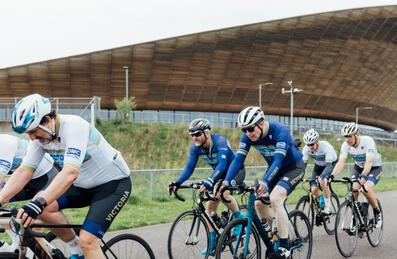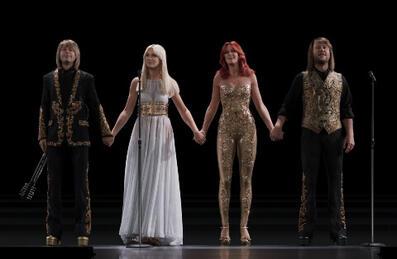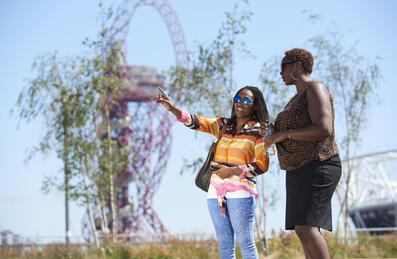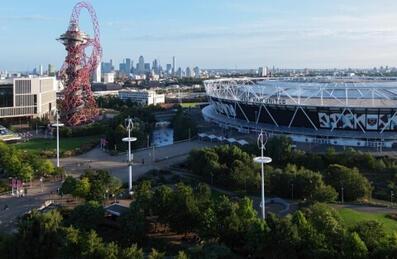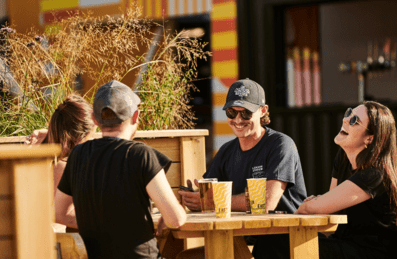
Popular Searches:
Keep up to date
Sign up today for exclusive offers and incredible experiences you won’t want to miss at Queen Elizabeth Olympic Park.
Sign up nowThe ArcelorMittal Orbit and London Stadium ready to take part in Earth Hour
The ArcelorMittal Orbit and London Stadium ready to take part in Earth Hour
Story 23/03/2017
Two of the Park's most iconic venues are excited to take part in the global event!
Earth Hour Switch Off
This Saturday (25 March 2017), WWF unites the planet in Earth hour! From 8.30pm – 9.30pm, landmarks pledge to turn off their lights to raise awareness for climate change. Two iconic venues on the Park: the ArcelorMittal Orbit and London Stadium are excited to take part, by turning off the non-essential lights and temporarily departing the London skyline!
The promise for a sustainable games and legacy was a significant part of the bid which was won to host the London 2012 Games. Another legacy of the 2012 Games is the visual legacy of the ArcelorMittal Orbit, recognised by its prominent red steel structure; steel being chosen due to its infinite recyclability! Did you know that 60% of the ArcelorMittal Orbit is made from recycled steel, including washing machines and used cars?
The Park continues to work towards a sustainable future with its many bio-diverse green spaces, clean, usable rivers and canals, and a network of walking and cycle paths. You can even find sustainably designed homes and new technologies that are creating sustainable places for the future. Here are five other facts you may not know about the Park’s sustainability commitment:
• The three pools at the London Aquatics Centre hold over 10 million litres of water! All of the used water from the pool is collected and stored in the Old Ford water recycling plant on the Park. This is then used to flush all of the toilets in the swimming venue, as well as London Stadium and Copper Box Arena!
• London Aquatics Centre is also known for its stunning architecture and unique transformation post-2012 Games. The centre was reduced in size and the temporary seats used were removed. Since the transformation, 15,000 seats have been reused around the country, many going to local sports clubs.
• On our Parklands and Wildlife trail, you can stumble across many types of birds, animals, trees and flowers which contribute to biodiversity in the park. Even the rare and declining native black poplar can be found in the Park! Some of which were grown from cuttings taken from the site pre-2012 Games, before decontamination works began and have been brought back into the landscape.
• London Stadium was specifically designed to use minimal amounts of material, having used one half of the steel used to build the Bids Nest stadium which was used in the Beijing 2008 Olympic Games.London Stadium continues to host a wide range of events including: Premier League football, Rugby World Cup, World Para Athletics Championships, IAAF World Championships, Guns N’ Roses tour, International cricket and much more.
• The Park is powered by a district energy network connected to two cutting-edge energy centres. They provide electricity and produce low carbon heating and cooling to developments in the Park, such as East Village (which was previously the Athlete’s Village in the 2012 Games), Westfield shopping centre, leisure facilities and will be used for future residential developments such as Chobham manor.
If you would like to find out more about the Park’s commitment to sustainability, beyond the Park venues, then make sure you check out Your Sustainability Guide to Queen Elizabeth Olympic Park 2030.
